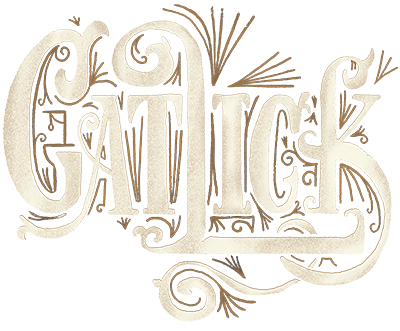Visual Artifact Page

corner of moreland & boulevard
This is the Cabbagetown corner where David Samples was shot and killed in August of 1984. You can see the smokestacks of the Fulton Bag & Cotton Mill on the left side of the image. The phone booth long since removed, today it is an empty lot.
To see the original news article about David’s death, click here.
Photo via Google Maps
fulton cotton spinning company
In this “bird’s eye view” map from the 1880s, you can see the earliest depiction of Jacob Elsas’s Fulton Cotton Spinning Company and the mill village taking shape around it. 60 years later, this area would be known around Atlanta as Cabbagetown. Note that Factory St. is now called Carroll Street.
Image via Library of Congress
The elsas family
Jacob is shown first row at center. Oscar is back row, second from the right.
Photo via the Breman Museum - Jacob Elsas Family Papers
Fulton Cotton Spinning Company
One of the earliest images of the Fulton Cotton Spinning Company. Taken in the 1880s.
Photo via the Georgia Tech Library - Fulton Bag & Cotton Mills Digital Collection
Factory town
One of the earliest known images of Factory Town (later known as Cabbagetown) which shows the rows of worker housing surrounding the cotton mill. This image was taken from inside Oakland Cemetery (note the white stone monuments in the foreground).
Photo via the Georgia Tech Library - Fulton Bag & Cotton Mills Digital Collection
FB&CM Correspondence
Dated July 1, 1901. Note images of the newly opened plants in St. Louis and New Orleans flanking the center image of the Atlanta factory.
FB&CM Correspondence
Dated May 25, 1899
Fulton Bag & Cotton mills management team
This photo, taken around 1910, shows the office staff and management team of FB&CM. Jacob Elsas is seated at center and is son Oscar, then a Vice President, is seated to his right.
Photo via the Georgia Tech Library - Fulton Bag & Cotton Mills Digital Collection
FB&CM correspondence
Dated August 7, 1901
oscar elsas
Photo taken around 1910.
Oscar Elsas and Wife
original blueprints
Showing the original towers of the Fulton Bag & Cotton Mill.
Blueprint housed at the Georgia Tech Library - Fulton Bag & Cotton Mills Digital Collection
Plaque beneath bell reads, “This bell mounted in 1882 on original cotton mill which is now the old bleachery building. It was used to awaken employees and announce stopping times.” Photo circa 1950’s.
Photo via the Georgia Tech Library - Fulton Bag & Cotton Mills Digital Collection
The Ponce de leon apartments
Opened in 1913, the Ponce de Leon Apartments were unlike any other residences in the city. Rising 12 stories over Atlanta’s posh thoroughfare, Peachtree Street, they included all the latest amenities—elevators, heating, maid service, mechanical refrigeration, sleeping porches, and a European style cafe on the first floor.
By 1914, the building’s tenant list read like a who’s who of Atlanta’s elites—Inmans, Elsases, and even a Candler. Oscar Elsas joined his Gentile elites as one of the first Atlanta Jews with a coveted Peachtree Street address.
Today, the Ponce Apartments contain condominiums. It is located caddy-corner to Atlanta’s popular Fox Theatre.
interior view
A look inside the Fulton Bag & Cotton mill in the early 1900’s
Photo via the Georgia Tech Library - Fulton Bag & Cotton Mills Digital Collection
Interior view
A look inside the Fulton Bag & Cotton mill in the early 1900’s
Photo via the Georgia Tech Library - Fulton Bag & Cotton Mills Digital Collection
women workers
In the Fulton Bag & Cotton Mill. Photo taken in 1915.
Photo via the Georgia Tech Library - Fulton Bag & Cotton Mills Digital Collection
Cabbagetown in the 1910’s
Photo via the Georgia Tech Library - Fulton Bag & Cotton Mills Digital Collection
Cabbagetown in the 1910’s
Photo via the Georgia Tech Library - Fulton Bag & Cotton Mills Digital Collection
Cabbagetown in the 1910’s
Photo via the Georgia Tech Library - Fulton Bag & Cotton Mills Digital Collection
Cabbagetown in the 1910’s
In the time before grocery stores, small markets like Red J met the local needs.
Photo via the Georgia Tech Library - Fulton Bag & Cotton Mills Digital Collection
Pickett’s alley
Known for generations as “Pickett’s Alley,” this small alley extends off the southern end of Carroll Street. At left, Pickett’s Alley in the 1910’s. At right, B.T. rides his bike down Pickett’s Alley in 2016.
Photo at left via the Georgia Tech Library - Fulton Bag & Cotton Mills Digital Collection
Photo at right via Sterling Graves
“Fiddlin” John Carson (1868 - 1949)
Known for his unparalleled skills with a fiddle, John Carson was also a Cabbagetown resident in the 1910’s. In the 1920’s he recorded the first country music album in Atlanta. “Cotton-Eyed Joe” and “Little Mary Phagan” were two of his more popular songs.
moonshine kate
In the 1920’s, Rosa Lee Carson, traveled and toured around the country with her father, John. She was performed using the pseudonym, “Moonshine Kate.”
William Burns (1861 - 1932)
William Burns was a private detective who achieved international fame in the early 1900’s. In 1914, he arrived in Atlanta, intent on solving—once and for all—the mystery of the Mary Phagan murder.
Conley the ripper?
In 1914, detective William Burns made the shocking allegation that Jim Conley not only killed Mary Phagan, but that he was also the Atlanta Ripper. His claims were never verified and eventually faded from the press.
This is the Fulton Bag & Cotton Mill as it appears today with the Atlanta skyline in the background. In the 1990’s, the facility was transformed into apartments and loft condos.



























